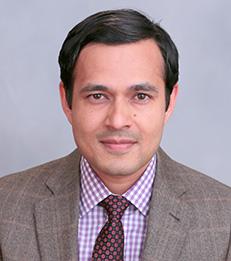Research Highlights
New Research Finds that Special Interest Lobbying Does Influence NIH Research Funding
—


Our research shows that the mechanisms for influence are complex, but that lobbying may have a useful, informational role and does impact federal funding for biomedical research.
In a new study, NYU Stern Professor Deepak Hegde and Bhaven Sampat of Columbia University investigate whether lobbying by special interest groups affects funding for research by the National Institutes of Health (NIH), a publicly funded federal agency and the world’s largest funder of medical research – nearly $30 billion each year. They found that lobbying does have an effect on NIH research grants, and showed the subtle mechanism of how lobbyists’ influence plays out.
The authors analyzed lobbying and NIH funding for 955 rare and often fatal diseases – including Parkinson’s Disease, Cystic Fibrosis, Multiple Sclerosis, Sickle Cell Disease, Huntington’s Disease, Hodgkin’s Disease, Cerebral Palsy and Spina Bifida – between 1998 and 2008.
Key findings include:
The article, “Can Private Money Buy Public Science? Disease Group Lobbying and Federal Funding for Biomedical Research,” is forthcoming in Management Science.
Follow @NYUStern on Twitter for the latest in faculty research.
The authors analyzed lobbying and NIH funding for 955 rare and often fatal diseases – including Parkinson’s Disease, Cystic Fibrosis, Multiple Sclerosis, Sickle Cell Disease, Huntington’s Disease, Hodgkin’s Disease, Cerebral Palsy and Spina Bifida – between 1998 and 2008.
Key findings include:
- Lobbying by disease advocates mobilizes political support in the form of Congressional “soft earmarks” for specific diseases. Soft earmarks refer to language in the reports that accompany Congressional appropriations bills urging the NIH to support research on particular diseases or research fields.
- Lobbying is particularly effective in mobilizing political support when accompanied by scientific advances related to diseases and/or an increase in the number of related mortalities.
- The NIH appears to respond to Congressional earmarks through special grant mechanisms (i.e., “Requests for Applications ” and “Program Announcements”), which solicit research proposals in particular areas of research, rather than through grants for unsolicited investigator-initiated research.
- The overall effect of lobbying and earmarks on NIH funding appears to be in the range of 3-15 percent of the agency’s new spending on rare diseases, which amounts to less than one-third of all NIH grants each year.
The article, “Can Private Money Buy Public Science? Disease Group Lobbying and Federal Funding for Biomedical Research,” is forthcoming in Management Science.
Follow @NYUStern on Twitter for the latest in faculty research.
